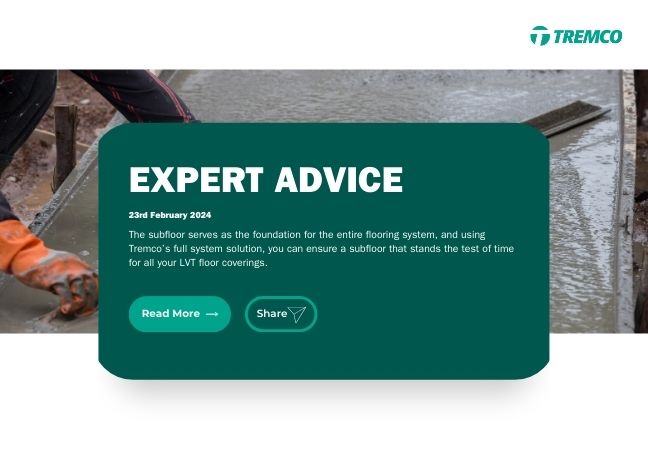The Importance of Subfloor Preparation
Subfloor preparation is essential for the success of any flooring project and must be one of the first considerations as it helps to extend the life of the finished floorcovering. The subfloor is the base upon which the finished floorcovering is installed, and if not properly prepared, can lead to a range of problems, including installation failure and possible structural damage.
Contractors often recognise that early-stage inspection is crucial to the overall successful performance of a flooring system and often turn to our technical experts for guidance. Technical advisors play a crucial role in initial inspection because if this stage is missed out, the flooring project can be susceptible to failure leading to health and safety concerns and even costly repairs, particularly in high-traffic areas or areas of frequent foot traffic.
Here are some things that building contractors should look out for when inspecting a sub-floor before laying any new flooring:
1. Moisture
When it comes to installing floor finishes, excessive moisture can pose a significant challenge that can potentially jeopardize the success of the project and lead to costly outcomes. Both new and refurbishment buildings can be subject to moisture in the subfloor and a surface damp proof membrane (DPM) or moisture vapour suppressant can be used to control moisture in the subfloor and reduce the chance of failure.
2. Structural Integrity
Onsite inspections can help to reveal any significant structural issues and determine the strength of the floor surface. It is important to make sure that the subfloor is properly reinforced. This is especially important if the finished floorcovering is going to be subjected to heavy loads or a lot of foot traffic. Reinforcing the subfloor can help to ensure that it is strong enough to support the finished flooring and can prevent it from cracking or collapsing. It is recommended to schedule a visit with one of our technical experts who can provide the best guidance on the appropriate remedial measures.
3. Levelness
Uneven substrate surfaces should be taken into consideration. If the substrate is not smooth or level, it may be necessary to use a moisture tolerant smoothing compound before installing the surface Damp Proof Membrane. To ensure a consistent result, an additional layer to smooth or level can be applied to ensure that coverage is achieved giving the desired even finish.
4. Compatibility
Contractors should ensure that sub floor products, DPM’s, primers, screeds and adhesives are compatible with the sub-floor prior to installation. The type of sub-floor will determine the product selection. If the new floor covering is to be adhered to the sub-floor, the adhesive selection must be correct. Contractors should consult with our technical services to confirm our recommendations for both the type of sub floor preparation and materials to ensure compatibility.
Other potential problem areas to consider in an inspection are Joints such as Construction or expansion or whether there is under floor heating. On refurbishment projects, an inspection can also help pinpoint what the building was used for previously, and what likely contaminates from past use are embedded into the substrate.
Tremco can offer support and guidance to ensure contractors make the right decisions. Contact us today











